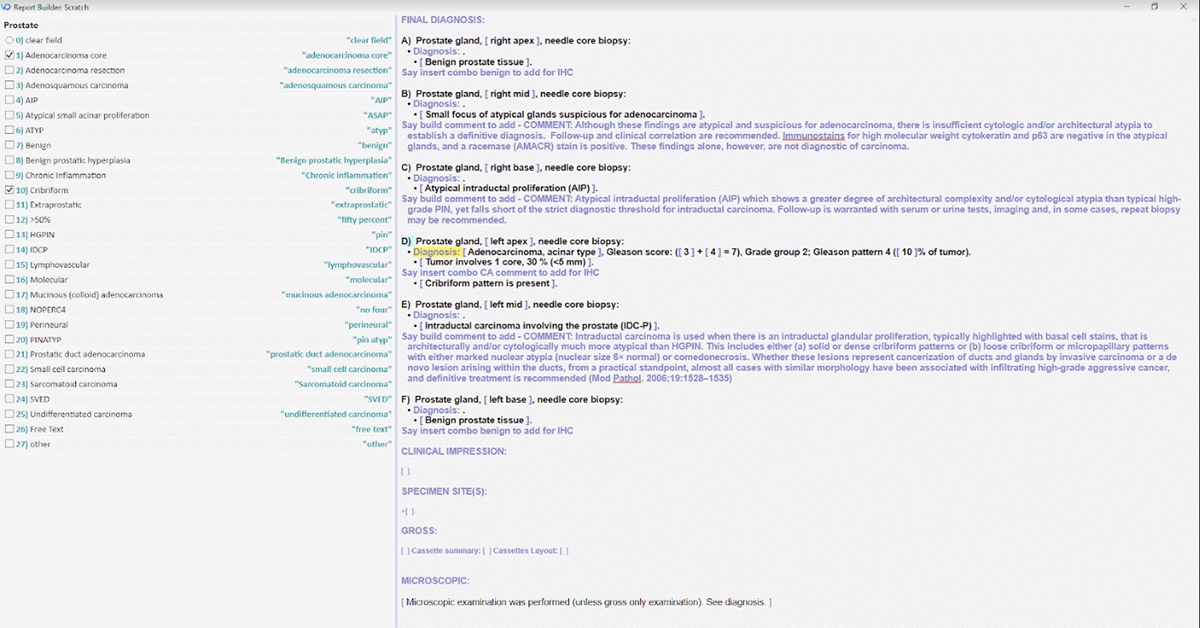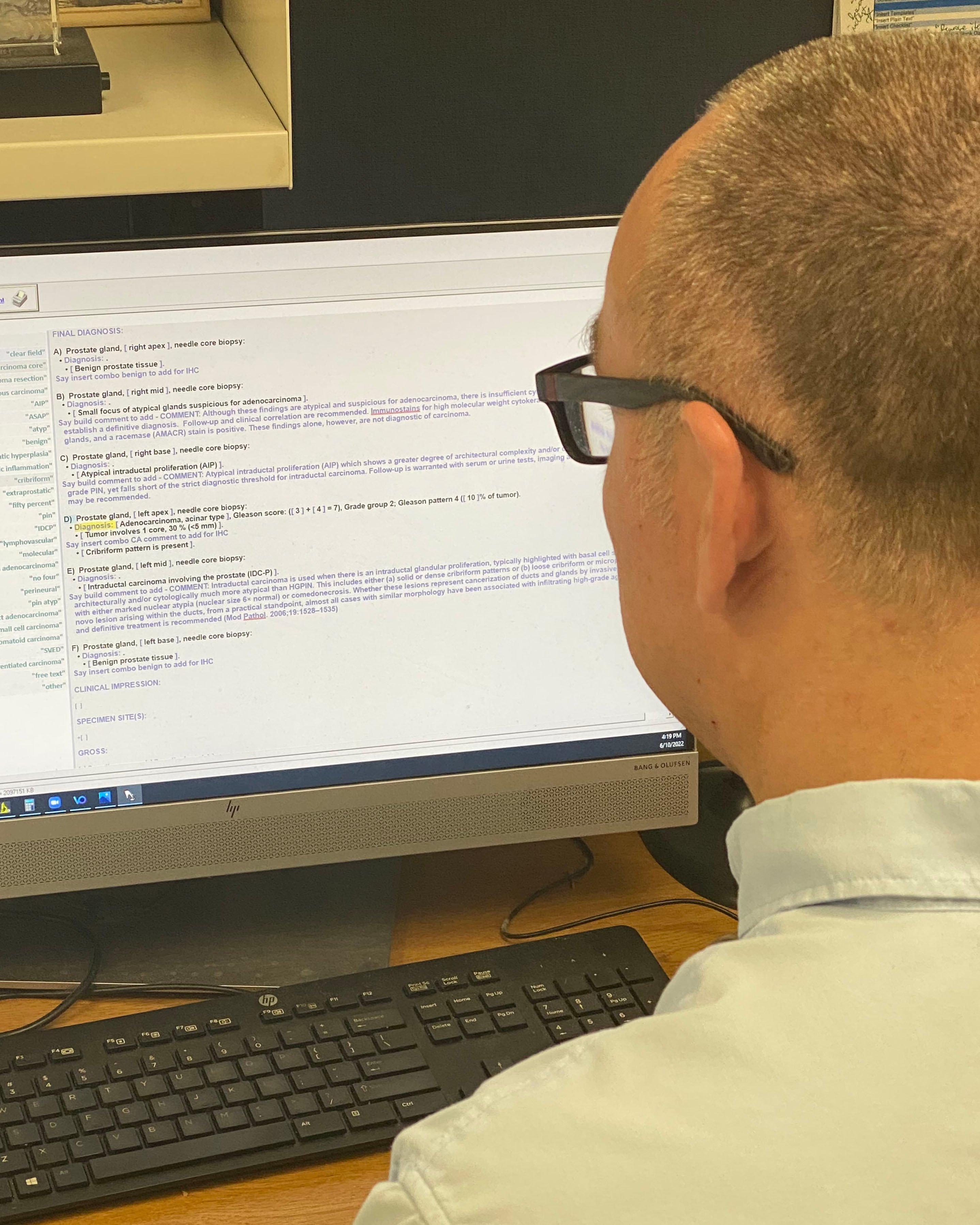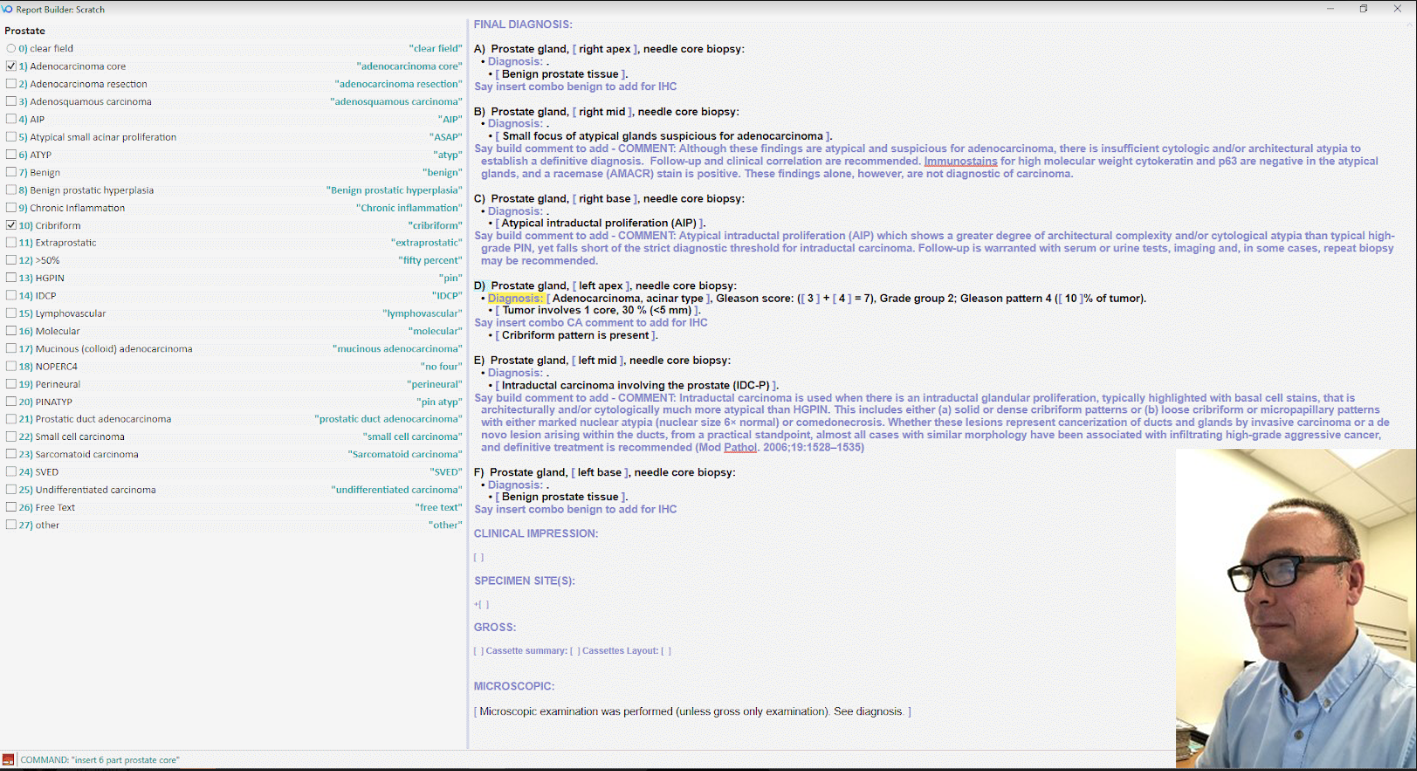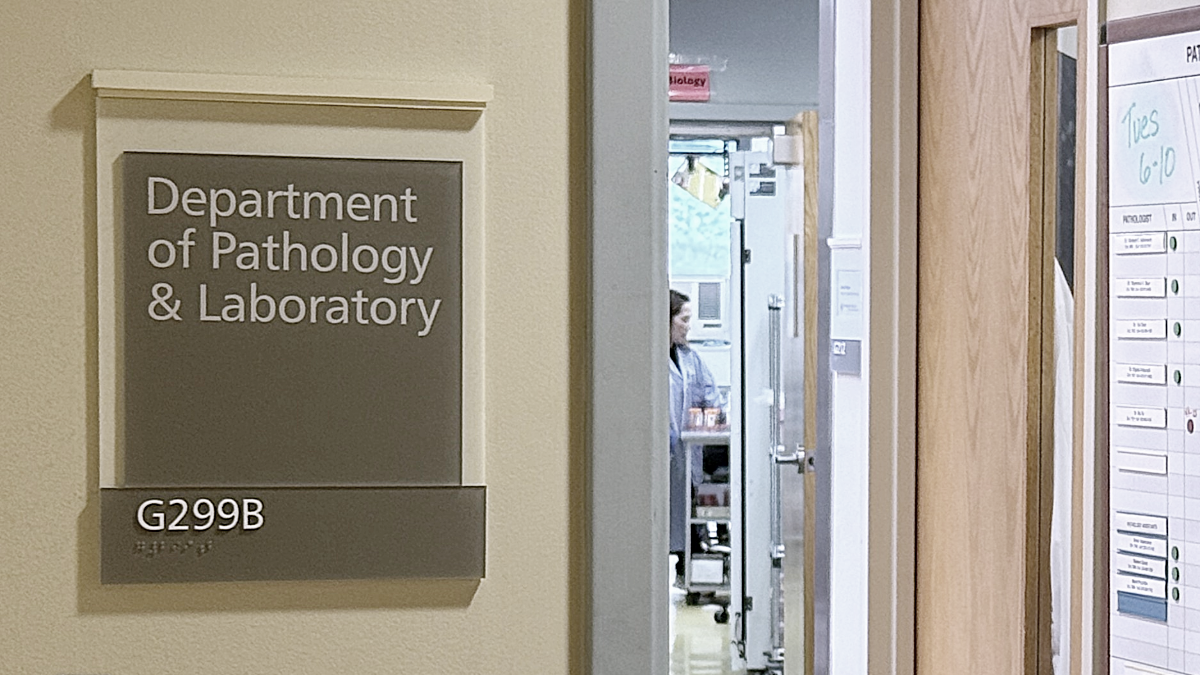Beat the Pathologist Shortage With the #1 Time-Saving Tool in Reporting
Anatomic pathology labs across the country are facing a perfect storm: a growing volume of cases, increasingly complex reporting requirements, and a...
4 min read
Voicebrook Thursday June 16, 2022

Dr. John Groth has been a pathologist at NorthShore University HealthSystem in Illinois since early 2019. When he first arrived at NorthShore the anatomic pathology lab was using an older version of Voicebrook’s VoiceOver reporting software, and beginning to implement an upgrade to VoiceOver PRO.
In this first installment of a multi-part interview series, Dr. Groth talks with Voicebrook about his experience learning to use PRO and the benefits he’s seen since NorthShore’s PRO implementation.
Voicebrook: What was your first impression of VoiceOver PRO?
Dr. John Groth: When I started using VoiceOver PRO at NorthShore, it just clicked with me and I started seeing all these opportunities and functionalities. It’s no longer just a dictation system. It’s a workflow solution. It can be customized to the individual lab, tailoring it to the workflow of that particular lab and their particular LIS, working on the interplay between all of these systems. And with that, it can then become an educational tool and teaching tool. It becomes so much more than just simply reporting results.
Voicebrook: It wasn’t too long before you wanted to see how far you could take the functionality of PRO, and really customize it for NorthShore and for the benefit of your patients.
Dr. Groth: I was thinking about how we could really leverage the benefits of PRO so that people could really see those benefits. We wanted to have some global templates for the whole lab. Having global templates is nice because that standardization creates a common tone and common language [in our pathology reports]. It required getting people used to that standardization, and getting people to understand that PRO was not VoiceOver 5.
 Dr. John Groth, using VoiceOver PRO's Report Builder at NorthShore University HealthSystem. Image courtesy of Dr. Groth.
Dr. John Groth, using VoiceOver PRO's Report Builder at NorthShore University HealthSystem. Image courtesy of Dr. Groth.
Voicebrook: So you decided to standardize just a few things first in order to get your feet wet, so-to-speak.
Dr. Groth: Standardizing our reporting was an institutional goal that we had been trying to achieve for a long time. Some diseases could be said seven different ways by a pathologist, all to describe the same single disease. Now, with electronic health records, the patient is often getting access to information first, before talking to their doctor. It can be confusing for them. They Google and try to look up information that’s complicated. So I'm all for standardization and all for global templates, because I think that’s the way all pathology should be.
But then, I wondered how we could make it even more efficient and more automated, and then make it more helpful to the pathologist.
Voicebrook: That’s when you came to Voicebrook and explained your ideas.
Dr. Groth: Yes. The main template we built with Voicebrook was the prostate one, where basically we had comments and things linked to diagnosis. The big thing before with the templates was that you had to know where all the templates were and what they were, and give the command to insert those templates. But now if they use the diagnostic template, we actually have the common templates right there and just tell them what to say. So they know they don’t have to hunt for the template and learn another command. For example, for a small focus of atypical glands suspicious for adenocarcinoma, they don’t have to know and say, “Insert the atyp comment.” They just [say the generic command] “build comment” and it’s automatically linked to that diagnosis.
Once we started doing that, I think it was a turning point because then people didn't have to remember all of these templates and they were just literally linked to the diagnosis. It was also an encouragement to use the diagnostic template, because then you didn't have to know where all these other things were. It was just already there.
After building these templates, we sought to improve the overall efficiency. Voicebrook worked with us to additionally automate the report building process for the pathologist. In this process we were able to automate the initial report build, including complete headers with site designations. We were able to say “dictate final,” and PRO’s Report Builder would open with all parts appropriately labeled based on the gross with immediate access to the templates. This takes approximately 1-2 seconds, instead of having to say, “dictate final,” “insert 6-part prostate core,” and then label the site designations for each part manually or with voice dictation, which previously took approximately 30 seconds. Therefore, we were not only able to see improved efficiency from transitioning to PRO from VoiceOver 5, but we were able to see the additional benefits of PRO for continual process improvement.
 The benign prostate template in PRO's Report Builder. Inset: Dr. John Groth. Image courtesy of Dr. Groth.
The benign prostate template in PRO's Report Builder. Inset: Dr. John Groth. Image courtesy of Dr. Groth.
Voicebrook: In addition to the efficiency gains, you’ve found that VoiceOver PRO is helping to double check your work and catch errors that might escape your notice.
Dr. Groth: Yes, with the CAP eCC checklists. Those checklists are so big and so cumbersome with so many steps… it’s easy to do something wrong. It’s happened to me. On the lymph node one, I’ve flipped the numbers of how many nodes I examined and how many nodes were positive. Fortunately PRO made it apparent that I had made a mistake. At my previous institution without PRO, I didn’t have that safety net.
Voicebrook: Laboratory workflows are always evolving. You seem eager to adapt to those changes, but is it difficult for all pathologists to have that mindset?
Dr. Groth: Adapting to a change in a laboratory workflow can be challenging for anyone. But as more info is going straight to the patient, our mindset has to change: the pathologist is not just writing the report for the doctor; they're writing it for the patient too. We have to write our reports for both.
This new type of workflow requires collaborative thinking. You can’t just do this once. It has to be fluid. Things change, diagnoses change, terms change, all of these things change. There has to be fluidity to the process. That’s where I think VoiceOver PRO transcends the concept of a dictation system… It's really a workflow solution. It’s the all-encompassing solution.
.jpg?width=600&name=test1%20(2).jpg)
Voicebrook thanks Dr. Groth for talking with us and sharing his experience creating reports with VoiceOver PRO.
Stay tuned for the next installment of our interview series with Dr. Groth. He shares the “aha” moment where NorthShore’s pathology lab realized how drastically PRO could revolutionize their workflow and improve efficiencies.

Anatomic pathology labs across the country are facing a perfect storm: a growing volume of cases, increasingly complex reporting requirements, and a...
.png)
We believe in what we do here at Voicebrook. We always have. But perhaps it’s time we started saying it louder. Voicebrook is the leading solution in...

Dr. Michael Williams is a neuropathology fellow at the University of Alabama-Birmingham and a founding member of the Society of Black Pathologists....